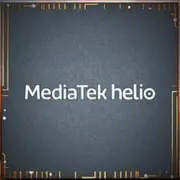MediaTek Helio G25

MediaTek Helio G25: Budget Processor for Basic Tasks. Detailed Review
April 2025
Introduction
In the world of budget smartphones, the MediaTek Helio G25 remains a popular choice for devices priced under $150. This processor, released a few years ago, is still being utilized in new models for 2024-2025 due to its energy efficiency and sufficient performance for everyday tasks. In this article, we will explore what makes the Helio G25 noteworthy, who it is suitable for, and what nuances to consider when choosing a smartphone based on it.
1. Architecture and Technology Process: A Balance of Cores and Energy Efficiency
The Helio G25 is built on a 12-nanometer technology process, which is considered outdated by 2025 (modern flagships use 3–4 nm), but remains a viable option in the budget segment. The lower transistor density compared to newer chips is offset by lower manufacturing costs and moderate heating.
CPU:
- 8 cores in a Big.Little configuration:
- 4 Cortex-A53 cores with a clock speed up to 2 GHz;
- 4 Cortex-A53 cores with a clock speed up to 1.5 GHz.
All cores are energy-efficient, which ensures long battery life but limits performance in resource-intensive tasks.
GPU:
- PowerVR GE8320 graphics processor running at 650 MHz. It supports basic APIs for mobile gaming (OpenGL ES 3.2, Vulkan 1.1) but is designed for screen resolutions up to HD+ (1600x720 pixels).
Features:
- No support for high refresh rates (maximum of 60 Hz);
- Limited memory support: only eMMC 5.1 (no UFS) and single-channel LPDDR4X up to 6 GB.
2. Performance in Real-World Tasks: What Can the Helio G25 Do?
Gaming:
- Light Projects: Subway Surfers, Candy Crush, Clash of Clans — run without issues.
- Medium Load: PUBG Mobile or Mobile Legends — only at low graphics settings (up to 30 FPS), with possible frame drops during active play.
- Heavy Games: Genshin Impact or Call of Duty: Mobile — not recommended due to low frame rates (below 20 FPS) and significant heating.
Multimedia:
- Playback of 1080p@30fps (H.264/HEVC) video through apps like YouTube;
- Video recording — maximum of 1080p@30fps;
- Support for displays with a resolution up to 1600x720 (HD+).
AI Applications:
- Basic functions like face or scene recognition in the camera work, but slowly;
- Neural network calculations (e.g., photo stylization with Prisma) take time due to the lack of an NPU.
Energy Consumption and Heating:
- TDP of 2W — one of the main advantages. Smartphones with the Helio G25 easily last 1–2 days on moderate use;
- Heating rarely exceeds 40°C even during gaming, allowing for simpler cooling systems.
3. Integrated Modules: Connectivity and Communications
Modem:
- 4G LTE Cat-7 with a maximum download speed of 300 Mbps and upload speed of 150 Mbps. No 5G support, which becomes a downside for budget devices by 2025.
Wi-Fi and Bluetooth:
- Wi-Fi 5 (802.11ac) at 2.4 GHz — stable connection but without support for 5 GHz;
- Bluetooth 5.0 — compatibility with most wireless headphones and gadgets.
Navigation:
- GPS, GLONASS, Galileo — location accuracy within 5–10 meters.
4. Comparison with Competitors: Where the Helio G25 Excels and Where It Falls Short
Analogues:
- Unisoc Tiger T606 (AnTuTu 10 — ~220,000): Better gaming performance due to Mali-G57 GPU, but higher smartphone prices ($170–$200);
- Qualcomm Snapdragon 450 (AnTuTu 10 — ~110,000): An outdated chip with lower energy efficiency;
- MediaTek Helio G35 (AnTuTu 10 — ~175,000): A close "relative" of the G25 with a slightly more powerful PowerVR GE8320 GPU (up to 680 MHz).
Conclusion:
- The Helio G25 is suitable for those looking for the cheapest smartphone ($80–$150) with basic functions;
- For gaming and multitasking, it is better to choose models with Snapdragon 680 or Unisoc T606.
5. Use Cases: Who Is the Helio G25 Suitable For?
- Everyday Tasks: Social media, messaging, video watching, browsing — the processor handles these tasks well.
- Gaming: Only for casual games. For streaming or competitive projects, more powerful hardware is required.
- Photo and Video: Cameras up to 21 MP (single) or 13+5 MP (dual). Bokeh effects are possible, but AI enhancements are slow.
6. Pros and Cons
Pros:
- Low energy consumption;
- Affordable device prices;
- Support for 4G and Wi-Fi 5.
Cons:
- Weak gaming performance;
- Lack of 5G;
- Limited support for modern codecs (e.g., AV1).
7. Practical Tips: How to Choose a Smartphone with Helio G25?
- RAM: At least 3 GB (preferably 4 GB) for background tasks;
- Storage: From 64 GB + a memory card slot;
- Screen: IPS display with HD+ resolution — optimal for battery saving;
- Example models for 2025:
- Xiaomi Redmi 12C ($110): 4/64 GB, 13 MP camera;
- Realme C35 ($130): 4/128 GB, 5000 mAh battery.
8. Final Conclusion: Who Is the Helio G25 Suitable For?
This processor is designed for those who:
- Are looking for a smartphone for calls, messages, and light tasks;
- Value battery life (up to 2 days of use);
- Are not willing to pay for features they won’t use (5G, gaming on ultra settings).
Main Benefits:
- Low device cost;
- Battery savings;
- Sufficient performance for basic scenarios.
Conclusion
The MediaTek Helio G25 is an example of a successful balance of price and capability for the budget segment. Despite its age, it remains relevant in 2025 thanks to its energy efficiency and compatibility with popular applications. However, before purchasing, it is important to assess your needs: if you plan to use the smartphone for gaming or working with heavy software, it is better to consider models with more modern chips.
Basic
GPU Specifications
Connectivity
Memory Specifications
Miscellaneous
Benchmarks
Compared to Other SoC
Share in social media
Or Link To Us
<a href="https://cputronic.com/soc/mediatek-helio-g25" target="_blank">MediaTek Helio G25</a>